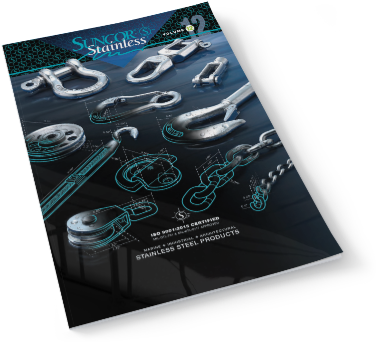Manufacturing stainless steel products requires a significant amount of research, design, technology and science. It is typically done in a multi-step process and can produce many different products.
Step 1: Melting/Electric Arc Furnace (EAF)
The raw materials, stainless steel scrap, other ferrous scrap, and ferrous alloys (Fe Cr, Fe Ni, Fe Mo, Fe Si) are melted together in an electric arc furnace (EAF). The molten metal is then poured into a ladle and transferred into the argon oxygen decarburization (AOD).
Step 2: Carbon Removal/Argon Oxygen Decarburization (AOD)
In step 2, the molten metal is processed in an Argon Oxygen Decarburization (AOD) converter to remove any excess carbon. During this step, other compositional adjustments are made to achieve the desired chemical composition such as adding alloying elements like molybdenum and nickel. If an extremely low carbon content is desired/required, a Vacuum Oxygen Decarburization converter is used.
Step 3: The Tuning Process
The tuning process involves slowly stirring the steel to remove unwanted elements and improve consistency. Precise adjustments can be made to the chemical composition of the steel during the tuning process.
Step 4: Continuous casting or Forming
The molten steel is now cast into slabs (for flat products), rods, tubes, billets, or blooms.
Step 5: Hot Rolling
During hot rolling, slabs and blooms are reheated in a furnace to a precise temperature and hot-rolled. Hot rolling reduces the thickness of the slabs to produce coils, sheets, strips or plates. Blooms are hot rolled into bar, which are cut into lengths at the exit of the rolling mill, or wire rod, which is coiled.
Step 6: Cold Finishing/Rolling
Cold finishing depends on the type of product being finished. Hot rolled coils are pickled in acid solutions to remove the oxide scale on the surface, then subsequently cold rolled in rolling mills and annealed in a protective atmosphere until the desired thickness and surface finish is obtained. Further operations such as slitting and tube forming can be performed in downstream facilities.
Hot rolled bars are straightened, then machined to the required tolerance and finish.
Wire rod coils are subsequently processed to produce cold-finished bars on drawing benches, fasteners on bolt making machines, and wire on single or multi-pass drawing machines.
Step 7: Annealing
During annealing, the steel is heated and cooled under precise conditions. The metal is then softened, the ductility is improved, internal stresses caused by processing are relieved and the grain structure is refined.
Step 8: Descaling
Electrocleaning or pickling the steel is done to remove any scales that may have formed during the annealing step.
Step 9: Cutting and Finishing
In the final step, the stainless steel is cut to size and the surface finish is applied. There are a variety of methods available for both cutting and finishing stainless steel. The method used depends on the product application.
